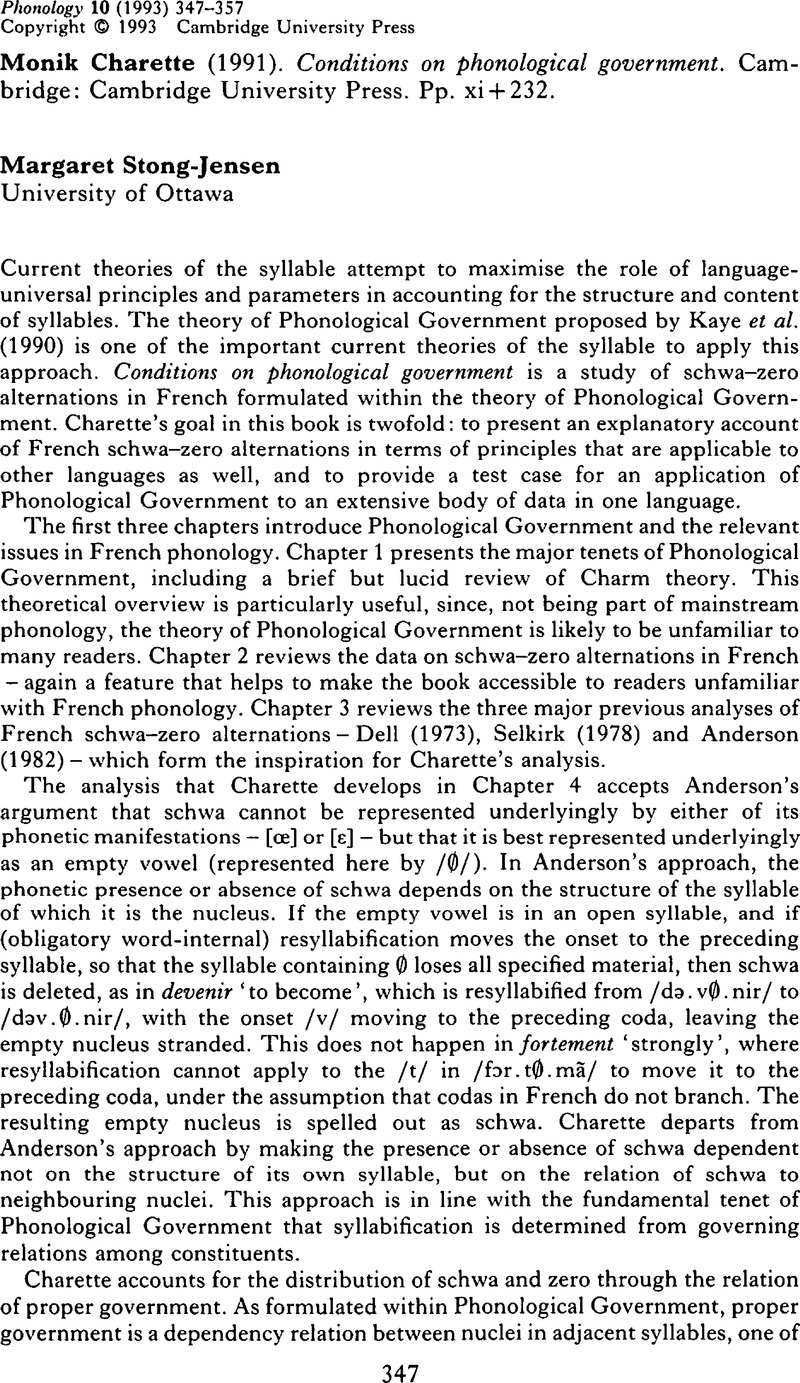No CrossRef data available.
Article contents
Monik Charette (1991). Conditions on phonological government. Cambridge: Cambridge University Press. Pp. xi + 232.
Published online by Cambridge University Press: 20 October 2008
Abstract
An abstract is not available for this content so a preview has been provided. Please use the Get access link above for information on how to access this content.

- Type
- Review
- Information
- Copyright
- Copyright © Cambridge University Press 1993
References
Anderson, Stephen R. (1982). The analysis of French schwa: or, how to get something from nothing. Lg 58. 534–573.Google Scholar
Borowsky, Toni (1989). Structure preservation and the syllable coda in English. NLLT 7. 145–166.Google Scholar
Dell, François (1973). Les règies et les sons: introduction à la phonologie générative. Paris: Hermann.Google Scholar
Durand, Jacques (1986). French liaison, floating segments and other matters in a dependency framework. In Durand, J. (ed.) Dependency and non-linear phonology. London: Croom Helm. 161–201.Google Scholar
Kaye, Jonathan, Lowenstamm, Jean & Vergnaud, Jean-Roger (1990). Constituent structure and government in phonology. Phonology 7. 193–231.CrossRefGoogle Scholar
Kidda, M. (1985). Tangale phonology: a descriptive analysis. PhD dissertation, University of Illinois, Urbana.Google Scholar
Nikiema, Emmanuel (1987). Le gouvernement propre en phonologie: elision et épenthèse vocaliques en tangale. Ms, UQAM.Google Scholar
Nikiema, Emmanuel (1989a). Vocalic epenthesis reanalyzed: the case of Tangale. In Hutchison, J. & Manfredi, V. (eds.) Current approaches to African linguistics. Vol. 7. Dordrecht: Foris. 41–51.Google Scholar
Nikiema, Emmanuel (1989b). Gouvernement propre et licenciement en phonologie: le cas du tangale. Langues Orientates Anciennes, Philologie et Linguistique 2. 225–251.Google Scholar
Rice, Keren D. (1992). On deriving sonority: a structural account of sonority relationships. Phonology 9. 61–99.CrossRefGoogle Scholar
Selkirk, Elisabeth O. (1978). The French foot: on the status of ‘mute’ e. Studies in French Linguistics 1:2. 141–150.Google Scholar
Selkirk, Elisabeth O. (1984). Phonology and syntax: the relation between sound and structure. Cambridge, Mass.: MIT Press.Google Scholar
Yip, Moira (1988). Template morphology and the direction of association. NLLT 6 551–577.Google Scholar
Yoshida, Shohei (1990). A government-based analysis of the ‘mora’ in Japanese. Phonology 7. 331–351.Google Scholar




